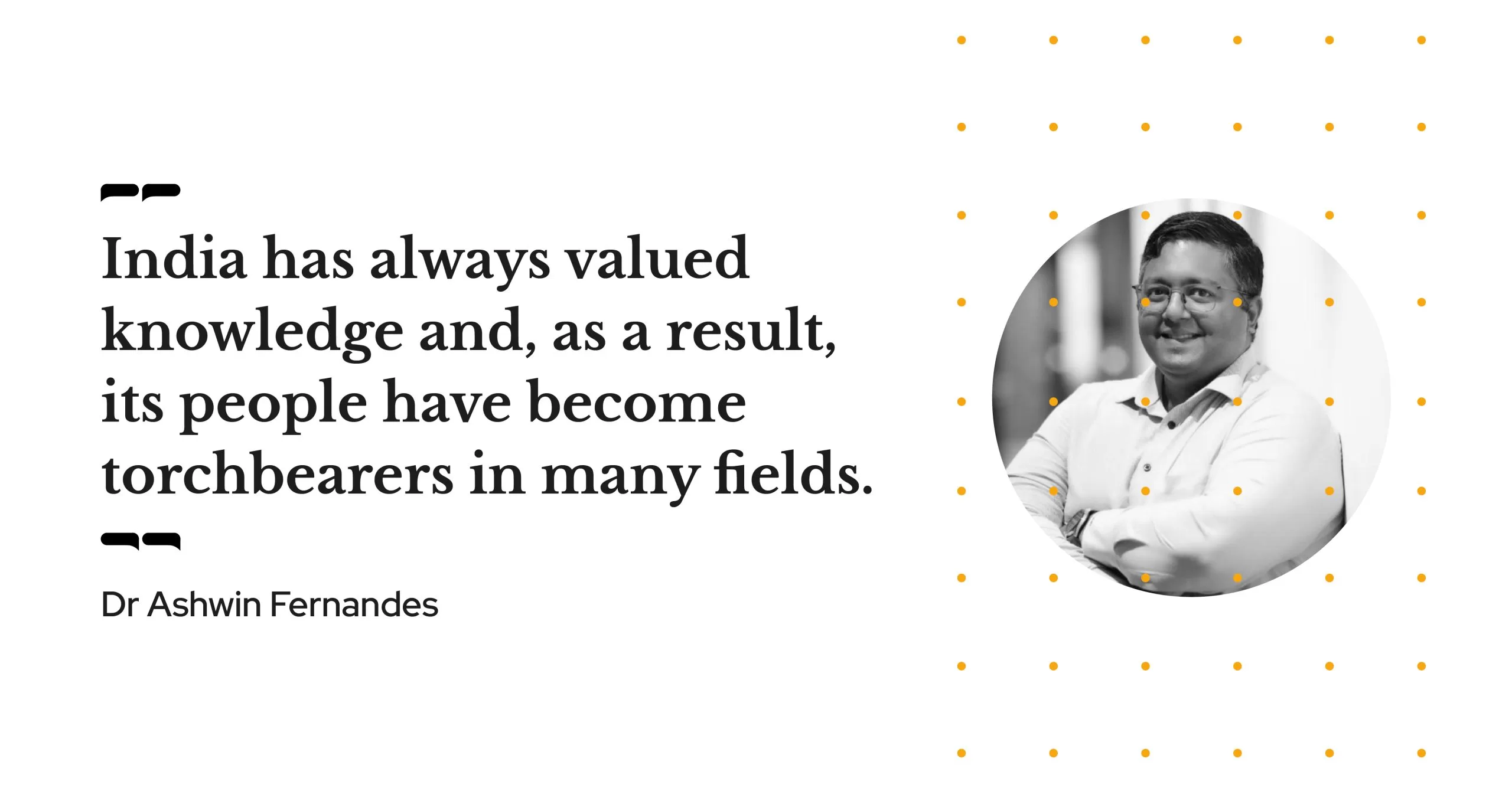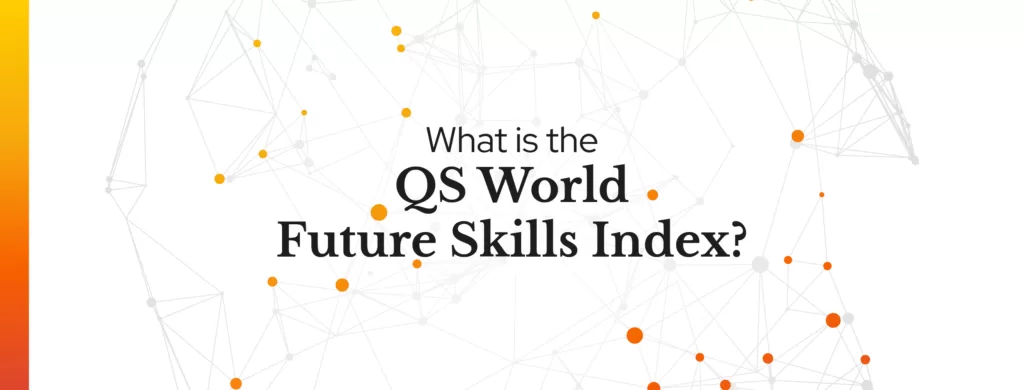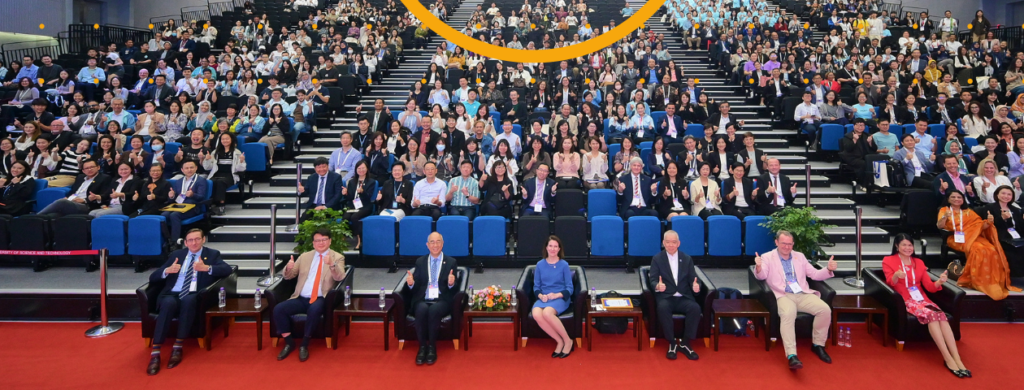
Dr Ashwin Fernandes is the regional director for Africa, Middle East and South Asia at QS and an ambassador of the quality movement in education. He works closely with institutions across the regions to support the drive for excellence and capacity building. Dr Fernandes is also the author of the newly published ‘India’s Knowledge Supremacy: The New Dawn’ which delves deep into the evolution of higher education in India throughout history. Today, he shares a glimpse into his research:
Dr Ashwin Fernandes:
India has always valued knowledge and, as a result, its people have become torchbearers in many fields. After the establishment of great universities in ancient India, such as Takshashila, Nalanda and Vallabhi, opportunities to access higher education, regardless of religion, caste, sex or creed, grew. India became a knowledge superpower and, through word of mouth, the depth of its education spread across the globe. In the history of the world, India’s contribution to the fields of mathematics, astronomy, language and literature has been particularly immense.
Yet invasions and plundering resulted in many universities across the Indian subcontinent being destroyed. Colonisation occurred with the arrival of the Portuguese, and subsequently, the British when the East India Company docked its ships on the shores of Calcutta. By the time they left, the Indian subcontinent was fragmented.
The partition caused unprecedented massacres and violence, with millions of refugees crossing the borders amid chaos. The newly-born governments failed to take strategic steps in preventing the mayhem that ensued and, as a result, education for many children got side-lined. Even after the formation of borders, India faced both international and domestic threats. Many different ideologies emerged, and some challenged the peace of India and its people.
During the middle of the 20th century, Jawaharlal Nehru, principal leader of the Indian nationalist movement, developed a blueprint for higher education in India. At first, he wanted to replicate world-class institutions given that, by the time Nehru became the first prime minister of India, America was booming with the advancement in science and technology. His visit to the Massachusetts Institute of Technology (MIT) in 1949 put ideas into his mind to create similar institutions in India. Thus, it gave rise to the Institutes of Technology in Kharagpur (1950), Bombay (1958), Madras (1959), Kanpur (1959) and Delhi (1961). All of these establishments were publicly supported to ensure that a lack of money would never prevent Indians from receiving the highest education possible. So, while India was navigating the impact of partition and independence, some of the most brilliant institutions were formed.
National educational policies, passed by subsequent governments, acted as steppingstones to a better education system. The diversity of India was captured somewhat by the education system, but true inclusivity was still missing having inherited an educational system which was rife with great educational disparities between men and women, upper and lower classes and urban and rural populations. Different governments began working on this: the National Education Policy of 2020 (NEP 2020) introduced a curriculum structure where students can gain knowledge as per their interests, and many programmes were introduced to provide skills to learners through high-quality education. NEP 2020 clearly mentions: “A high-quality higher education must enable personal achievement and enlightenment, constructive public engagement, and productive societal contribution. It must prepare students for more meaningful and fulfilling lives and jobs, as well as economic independence.”
The Union Cabinet of India approved NEP 2020 on 29 July 2020 and, in doing so, defined the vision for India’s new education system moving forward. The NEP 2020 supersedes the 34-year-old NPE of 1986 as the first education policy of the 21st century. The government clarified that no one will be forced to study any particular language, and that the medium of teaching will not be changed from English to any regional language. This policy intends to reduce student workloads and allow them to become more interdisciplinary and multilingual. Numerous new bodies and concepts, such as the National Education Commission, Academic Bank of Credit, National Research Foundation, Special Education Zones, and Gender Inclusion Fund, have been given legislative permission to be formed under NEP 2020.
India has had a glorious past, and despite the challenges faced by the economy for decades, it’s seeing a reverse trend towards knowledge prosperity. Ancient universities welcomed different cultures and languages, and diversified their subjects. The interactions between the teachers and the students left a mark on the history of Indian education. Following in the same footsteps, the NEP 2020 has brought major changes to the existing education system while maintaining the essence.
Under the leadership of Prime Minister Narendra Modi, traditions are meeting modernity in the educational sector. Finally, university students do not have to fit into a rigid structure. Instead, they can customise their education as per their preference. This initiative by the Ministry of Education has put smiles on the faces of millions of students and has thus weaved a better future for the country.
If you would like to hear more from Dr Ashwin Fernandes, he will be speaking at the annual QS India Summit 2023. The event will be taking place 19–21 February 2023 at Novotel Dona Sylvia Resort, Cavelossim, Goa, India. This event is hosted by QS under the patronage of the Ministry of Education and is a G20 side event.



